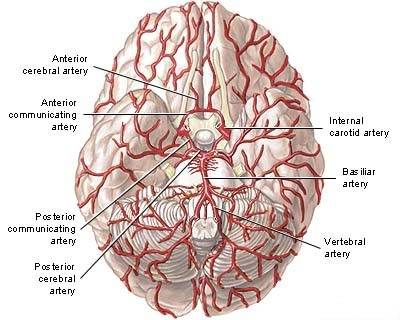Low Activity of Enzymes Involved in Pompe, Fabry Diseases Linked to More Dilated Arteries in Brain, Study Reports

Lower activity of the two lysosomal enzymes underlying Pompe and Fabry diseases — acid alpha-glucosidase enzyme (GAA) and alpha-galactosidase A (GLA) — is linked to dilated arteries in the brain, a preliminary study reports.
The study, “Association of Low Lysosomal Enzymes Activity With Brain Arterial Dilatation,” was published in the journal Stroke.
Enzymes are vital components for many chemical reactions that happen inside our body, and so, not surprisingly, defects in their activity are the underlying cause of several diseases.
Pompe disease is one such disorder, caused by a deficiency of the GAA enzyme, which is involved in the breakdown of glycogen (the principal storage form of glucose that is used as an energy source) by small organelles inside our cells called lysosomes.
Lack of the GAA enzyme leads to the accumulation of glycogen cells of the heart, skeletal, and smooth muscle.
Fabry disease is linked to the deficiency of the GLA enzyme that leads to the buildup of certain lipids (fat) inside cells.
Both enzymes have been associated with the dilation of certain arteries in the brain, suggesting that patients with either Pompe or Fabry disease may have dilated intracranial arteries. However, whether the GLA and GAA enzymes are involved in arterial dilation in the brain in other diseases, such as Parkinson’s, is unknown.
Researchers at the Columbia University Medical Center in New York recruited 107 participants, 98 with Parkinson’s disease and nine controls, with a mean age of 67.
They measured the enzymatic activity of GLA and GAA in dried blood spots. Additionally, they assessed the diameter of two main arteries — the left and right carotid arteries, those supplying the head and neck with oxygen-rich blood, and an artery involved in cerebral blood circulation, called the basilar artery.
They then modeled how brain arterial diameters correlated with the activity of both the GLA and GAA enzymes.
Results showed lower GLA and GAA enzymatic activity in participants with larger brain arterial diameters. The association was stronger for the basilar artery than the carotid artery.
Moreover, the link between lower enzyme activity and the dilated artery was similar between men and women, but apparently greater for people without Parkinson’s disease (controls).
Also, the association between these enzymes and brain arterial dilatation was completely independent of participant demographics and their vascular risk factors, such as hypertension and a history of smoking.
Although the findings are preliminary and larger studies are needed to confirm the initial results, “lower lysosomal enzymatic function in patients without Fabry or Pompe disease may play a role in brain arterial dilatation,” the study concluded.






